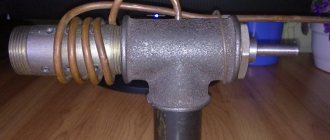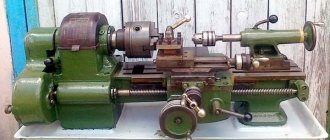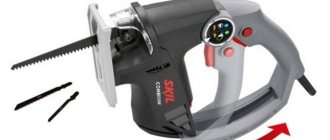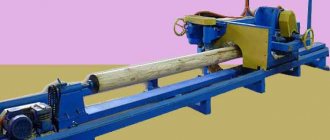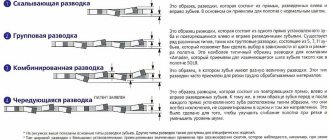Both beginners and experienced entrepreneurs are trying to pay more and more attention to the construction market. The reason for this is the attractive working conditions. One of the most profitable niches is brick production. With the right approach to creating a business, you can make significant profits.
It is noteworthy that individual entrepreneurs engaged in the production of brick products do not experience seasonal difficulties. This is because the building material is in demand at any time of the year. Brick does not require installation at any given time of the year, which means construction can be done all year round.
The most important factor when forming a business in the production of certain types of bricks is the correct selection of equipment. Not only the quality of the product depends on this, but also the volume of its production. The more batches are created, the greater the profit will be.
What does a brick production line consist of?
Correct selection of equipment makes it possible to determine production volumes. The entrepreneur must ensure that the selected equipment meets all safety requirements, since most purchased equipment operates on an electric drive. I would like to note that the equipment for the production of sand-lime bricks and the equipment for the production of facing bricks are similar to each other, only the proportions of the mixture differ. At the same time, the line for the production of ceramic bricks consists of the same basic models of equipment.
Are you interested in making polycarbonate? Find out what equipment is needed and what polycarbonate production technology is.
Everything about equipping a car service and choosing equipment is here.
So, here is what equipment for the production of clay bricks is needed to start a business:
- Mixer. This device is indispensable when creating high-quality raw materials for making bricks. The clay mass is fed into the mixer. More advanced models can simultaneously mix clay and screen out large extraneous fractions. To obtain the most optimal mineral composition of the brick, several types of clay can be fed into the mixer at once. Processing time directly depends on what types of bricks are made and what components are used for this.
- Automatic slurry slicing machine. Once the raw materials are mixed, they are formed into a special line. This machine is used to cut the created line to make individual rectangular pieces of clay from it. Feeding is carried out from a special extruder. These pieces, in fact, are the basis for creating raw bricks. The machine does not require regular maintenance. Only one operator is needed to control the work. As necessary, you can select the length of the block cut by the machine from a line of clay drawn along its conveyor belt. The list of main functions of this machine also includes the ability to select the speed of rolling the line along the tape. The devices differ in size and engine power. The device is powered, as a rule, by an ordinary 220V power supply. There are often models on the market that require a 380 volt network.
- Automatic machine for cutting raw bricks. Compared to the device presented above, the machine for cutting raw bricks has more functionality. Such equipment is very compact. With its help, the operator can more accurately cut blocks, which will then be used as a blank for feeding into the oven. The work is carried out from a 220 volt network. More professional installations with increased power require a 380 volt network.
- Dryers. The red brick manufacturing technology involves the use of this type of equipment. There are two types of brick dryers on the market. The first one is tunnel. Essentially, this is a very long chamber (from 24 to 36 meters). Raw food is fed into it. Movement around the chamber is guaranteed by trolleys that move around the chamber thanks to specially designed rail tracks. The advantage of such a dryer is the ability to significantly increase the productivity level of the enterprise. The second option is a chamber that has from 10 to 18 meters in length. There are special projections in the inner walls of the chamber. Special frames with pre-laid raw materials are placed on them. Heat enters through the lower special channels, after which it is removed through the exhaust channel located in the upper part of the chamber. It is noteworthy that the first and second options for drying raw materials are very popular. If during self-drying naturally the raw materials become ready after 20 days, with the help of dryers the processing time is reduced to 72 hours. Depending on the type of brick that will be produced at the enterprise, this figure can be reduced even further - even up to 32 hours.
- Kiln for firing. Most enterprises try to create a kiln for making bricks on their own. The reason for this is the relatively small number of industrial devices that can accommodate a large amount of raw materials. However, in a small business environment, it is quite logical to acquire an electrically heated oven. Despite their small capacity, such kilns process clay blocks as carefully as possible. To carry out proper processing, you will need only one worker who will monitor the temperature inside the chamber and the residence time of the raw materials in the interior. Manufacturers of brick kilns introduce special controllers into the equipment, which enable selection of one of several heat treatment modes. Often models have built-in fans. They help the furnace atmosphere to forcefully circulate throughout the internal space. As a result, compared to a kiln created on your own, the factory version will provide more thorough firing of the material.
- Trolleys, carts and other auxiliary equipment for the production of ceramic bricks, which allows you to move raw materials around the production workshop
When searching for equipment, you need to prepare for the fact that you won’t always be able to find it on the first try. The reason for this is the very small production volume of such equipment. It is in low demand, so manufacturers try to protect themselves as much as possible by creating equipment in small batches.
The best option in this situation is to seek help from a dealership or visit the manufacturer. Both options have another benefit. It lies in the fact that the manufacturer or a representative of the dealership will be able to provide detailed information about the technical specifications of the equipment, give practical advice on use and provide a warranty period for the purchased products.
Brick cutting machines overview
The use of brick cutting machines helps to carry out work in a safe manner with the highest possible accuracy and speed. This construction equipment is represented by stable metal structures with diamond discs connected to an electric drive, product fixation and cooling systems. This allows you to minimize the process of dust formation and the risk of brick chips getting on the operator. Almost all modern machines are multifunctional and compact, the scope of application is limited only by the high price. The minimum cost of devices for professional processing is 80,000 rubles.
Model range overview
The range of equipment for cutting bricks includes machines from domestic, German, Polish and Asian manufacturers. Cedima and Fubag (Germany), Diam (South Korea) have good reviews, Lebedyan (Russia) have acceptable reviews. All machines for cutting bricks differ in design features, amount of power consumption, type of fastening system, location of the electric drive, disk diameters and cutting depth.
1. Cedima stone-cutting machine CTS-57 G, Germany.
One of the most famous models from a trusted German manufacturer, in demand among companies with different volumes and areas of work. CTS-57 G Cedima is designed for high-precision cutting of building products: all types of bricks, including clinker, marble, natural stone, porcelain stoneware, ceramic tiles. The machine is multifunctional, it is recommended to choose it if continuous and intensive use is necessary (the engine is characterized by high performance). A bucket of water for cooling is located below the drive; its volume reaches 50 liters; dirty liquid is not returned to it immediately, but is drained into a settling bath.
Technologies for the production of bricks from clay
Red brick
The production of red brick in industrial quantities is carried out continuously. The technology for the production of wall and facing bricks involves the use of medium-fat clay, to which a small amount of sand and additional impurities are added. The product is completely devoid of structure porosity, since a special brick press is used here. Drying time varies between 36-72 hours, depending on the quality of the raw materials.
Clinker brick
High performance characteristics and attractive appearance of clinker are the result of the use of special additives in the clay composition. Additional substances sinter the clay more thoroughly. This is reflected in performance characteristics. The basis is shale clay from various formations. The technology for producing ceramic bricks includes four stages, listed in the subsection below.
Sand-lime brick
Despite the fact that clay still remains the main thing, an increased amount of water and quartz sand is added to the sand-lime brick. It is noteworthy that the technology for producing sand-lime bricks involves treating the raw material with water steam supplied under high pressure. This guarantees high density of the material.
When making sand-lime bricks, lime is slaked for 7-12 hours.
Calculation of the required investment amount, calculation of financing
We will plan the costs of a brick production plant so that you can predict the future financial result and payback of the project.
Brick Factory Cost Plan
| Index | 2017 | 2018 | 2019 | 2020 | 2021 |
| Material costs | 3810923 | 4407905 | 5105725 | 5802991 | 6408431 |
| Salary | 900000 | 1148000 | 1570000 | 2029000 | 2587000 |
| Social insurance | 260000 | 386000 | 477000 | 611000 | 740000 |
| Depreciation | 1672000 | 1672000 | 1589000 | 1589000 | 1509000 |
| Other expenses | 1895000 | 2174000 | 2597000 | 2977000 | 3201000 |
| Total | 8593800 | 9822000 | 11513000 | 13010000 | 14570000 |
In addition to investments in the purchase of equipment and other fixed assets, other investments are also necessary: for example, to obtain permission to operate and register a company, 28,000 rubles are required.
When drawing up a business plan for brick production, it is important to take into account the fact that the business may not necessarily be profitable in the first month; moreover, the company may not sell its products at all, so it is necessary to create a certain reserve to pay off mandatory payments. Since the amount of annual expenses is 8,479,940.91 rubles, the company will need 706,661.74 rubles per month. In the first year of activity, to launch a business idea to create a mini plant, you need 10,119,661 rubles. including:
- non-working capital RUB 9,373,000;
- software 12,000 rub.;
- cash for registration and obtaining licenses RUB 28,000.
- reserve capital to pay off expenses RUB 706,661.
The company can use a loan in the amount of RUB 10,119,661 to purchase assets and reimburse expenses.
Loan structure for brick production
| Index | 2017 | 2018 | 2019 | 2020 | 2021 |
| Amount of credit | 2023932 | 2023932 | 2023932 | 2023932 | 2023932 |
| Bank interest | 1010225 | 1010225 | 1010225 | 1010225 | 1010225 |
| Total debt | 3034157 | 3034157 | 3034157 | 3034157 | 3034157 |
Having the total amount of expenses and the loan repayment amount, we can calculate the total costs of the business:
| Index | 2017 | 2018 | 2019 | 2020 | 2021 |
| Operating expenses | 8479940 | 9782122 | 11346195 | 12940446 | 14434854 |
| Financial expenses | 1010225 | 1010225 | 1010225 | 1010225 | 1010225 |
| Total | 9490166 | 10792347 | 12356420 | 13950671 | 15445079 |
For the investment to pay off within 5 years, it is necessary to receive 9.4 million rubles. income, that is, to produce 1,898 thousand bricks per year (6.3 thousand per day)
The main source of profit in an enterprise is markup. For this company the markup is 25.0%. Let's calculate planned income for the next 5 years.
Read also: The most popular home business in 2022 and a list of start-up costs for opening it
Planning of income and financial results
| Index | 2017 | 2018 | 2019 | 2020 | 2021 |
| Income | 11862707 | 13490434 | 15445525 | 17438339 | 19306349 |
| Expenses | 9490166 | 10792347 | 12356420 | 13950671 | 15445079 |
| Profit before tax | 2372541 | 2698086 | 3089105 | 3487667 | 3861269 |
| Income tax | 474508 | 539617 | 617821 | 697533 | 772253 |
| Net profit | 1898033 | 2158469 | 2471284 | 2790134 | 3089015 |
Based on the table data, the following conclusions can be drawn. A mini brick factory will be profitable next year. The planned net profit is 1,898,033 rubles. The calculations take into account the taxation of profits, which will be 20% in 2022.
| Cash Flow | 1486068 |
| Profitability index | 1.00 |
| Internal rate of return, % | 01.12.1993 |
| Payback period, years | 05.02.2017 |
Molds for making bricks
An entrepreneur can use molds made by hand from boards. But in industrial production volumes this approach is not acceptable.
To make the most even brick possible, a special mold is used. This brick making machine allows you to achieve the most dense structure without any pores inside. A mechanized mold can create quite a lot of pressure. A standard brick making press operates with a force of 20 tons, simultaneously creating 10 or more bricks. Even the most careful production of handmade molds cannot compare with the mechanized method of forming blocks.
Modern technology for the production of ceramic tiles allows us to obtain a high-quality product in a short time.
Do you want to open a car wash, but don't know where to start? Detailed information about car wash equipment is presented here.
How is tire fitting carried out? What tools are used? More details at.
How to enter a new market with a new product - this issue is solved with the help of advertising. When creating a business plan for the production and sale of bricks on the Russian market, it is important to research all types of advertising that can be used effectively. Since the audience is very narrow-profile, there is no point in spending money on advertising on television; personal contacts with developers are necessary. To do this, you need to take a database of all enterprises and establish business relationships with them. The main advantage of our product is its price, so this business has strengths. Ideally, contracts for the supply of products will be concluded, this will allow planning production volumes and further developing the brick business.
Read also: Growing strawberries as a seasonal income - all the secrets of the farming business
How to get a mixture for making bricks?
The most important rule is to monitor the fat content of the clay. The strength of the finished product as a whole greatly depends on this indicator. To get the most durable brick block, you need to first test the fat content of the clay. Everything is easy - take a kilogram of clay and add a small amount of water to it. The mixture is stirred until it begins to stick to your hands. The “dough” is rolled into a small ball with a diameter of 10 centimeters, after which it is placed in the shade for 2-3 days. If there are no cracks, then the raw material is normal. If there are cracks, you need to add a little sand. A fragile ball without cracks indicates insufficient fat content of the raw material. In this case, a fattier type of clay is added.
Production stages
The transformation of clay into finished brick occurs in four stages:
- Extraction, delivery and preparation of raw materials.
- Formation of raw material.
- Raw drying
- Firing in a kiln.
After this, the bricks are cooled, stacked and packaged.
Equipment models
Vibropress Sirgis-universal. Operates on a 220 volt network. The press creates a force equal to 29 tons. It is possible to use different forms. Maintenance is carried out by one worker. The dimensions of the equipment are comparable to the dimensions of two long refrigerators placed in a row.
Kerammash kiln. Electric heating. 2 m3 useful volume. The maximum temperature inside the chamber is 1260 degrees. The doors are rotary. Roll-out pallet simplifies loading and unloading of raw materials/finished products. Equipped with a fan.
Mixers RusMash SMK 125A . Two shafts speed up the processing of raw materials. They operate on a 380 volt network. Built-in mixer humidification function.


